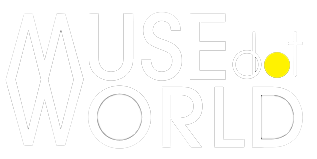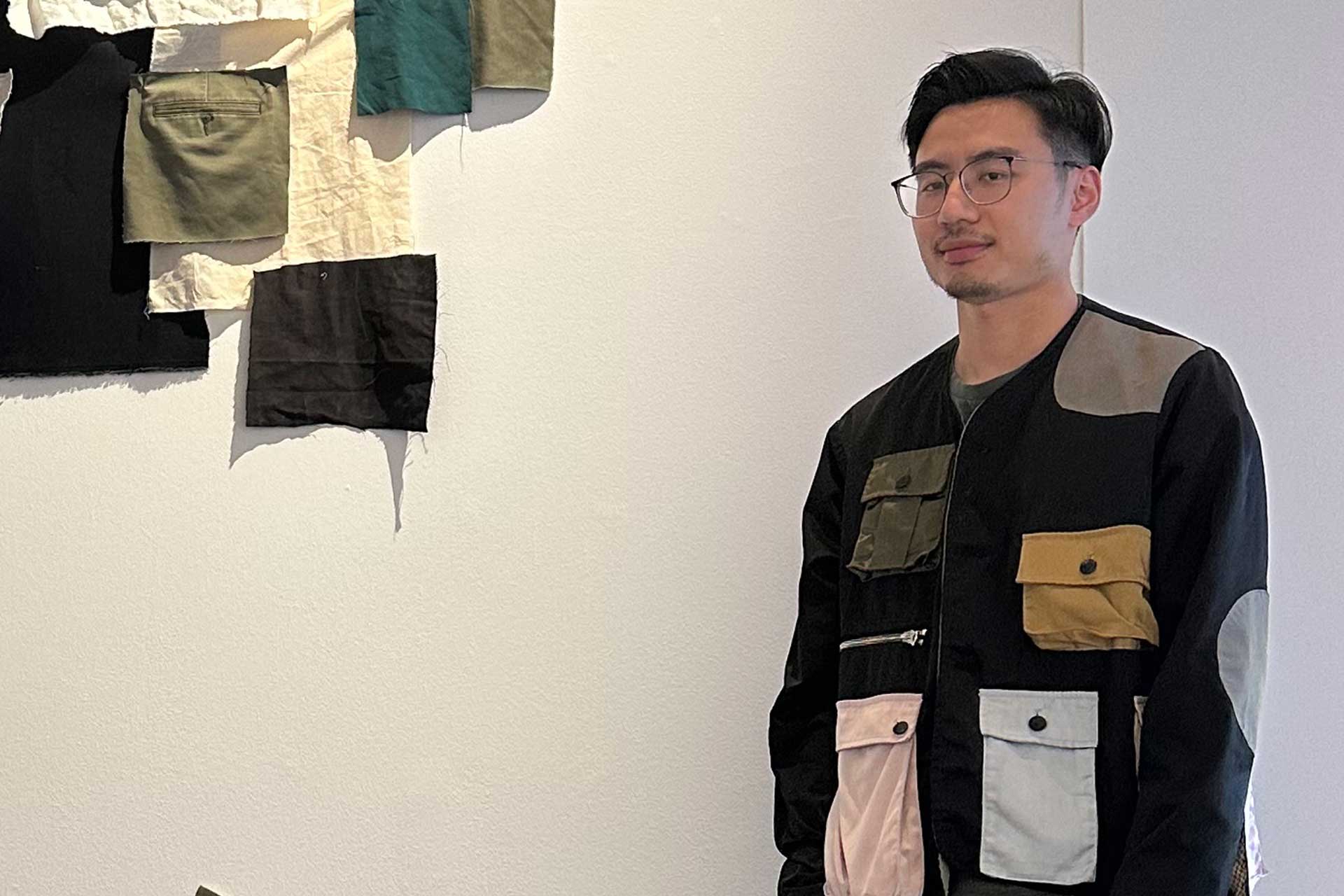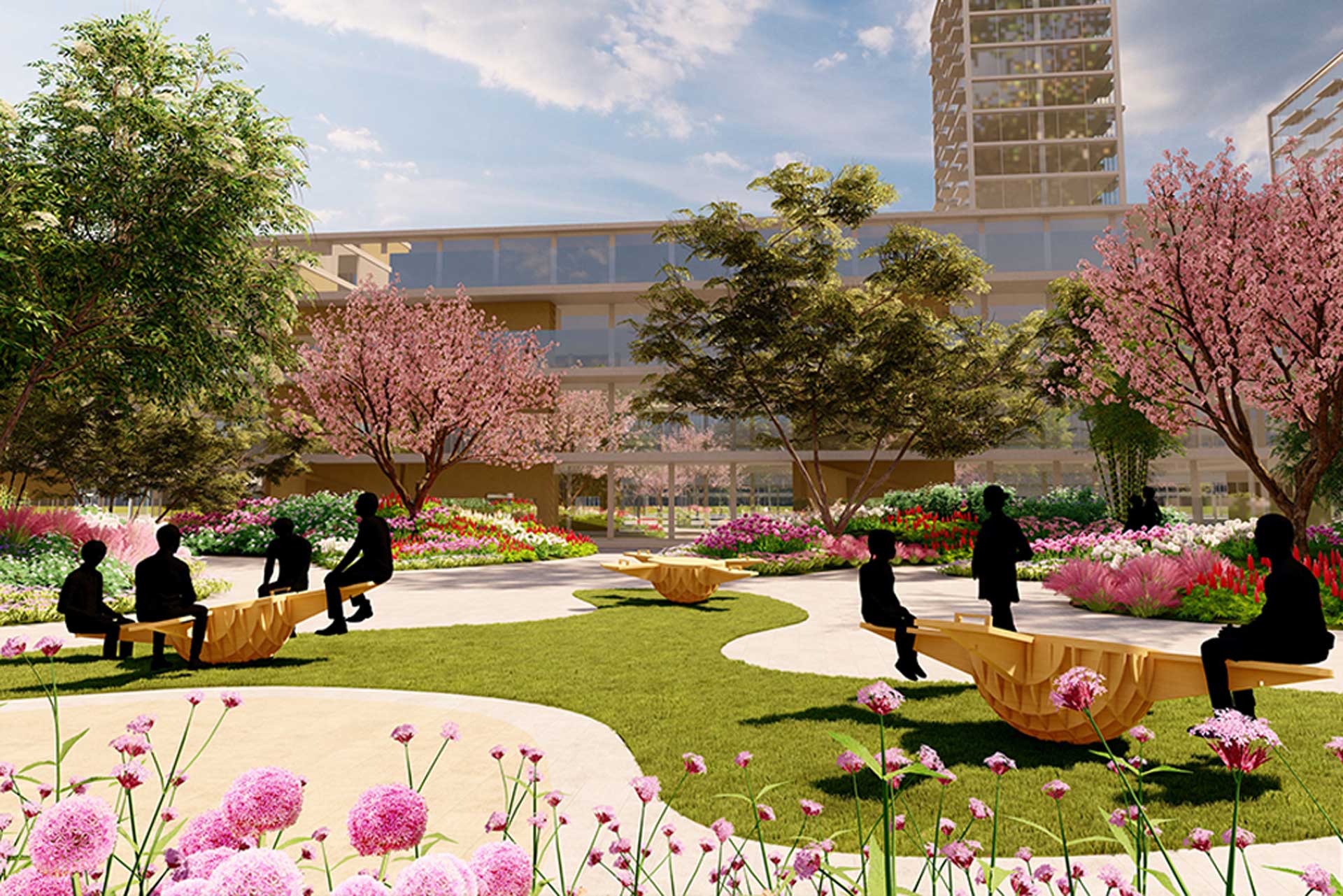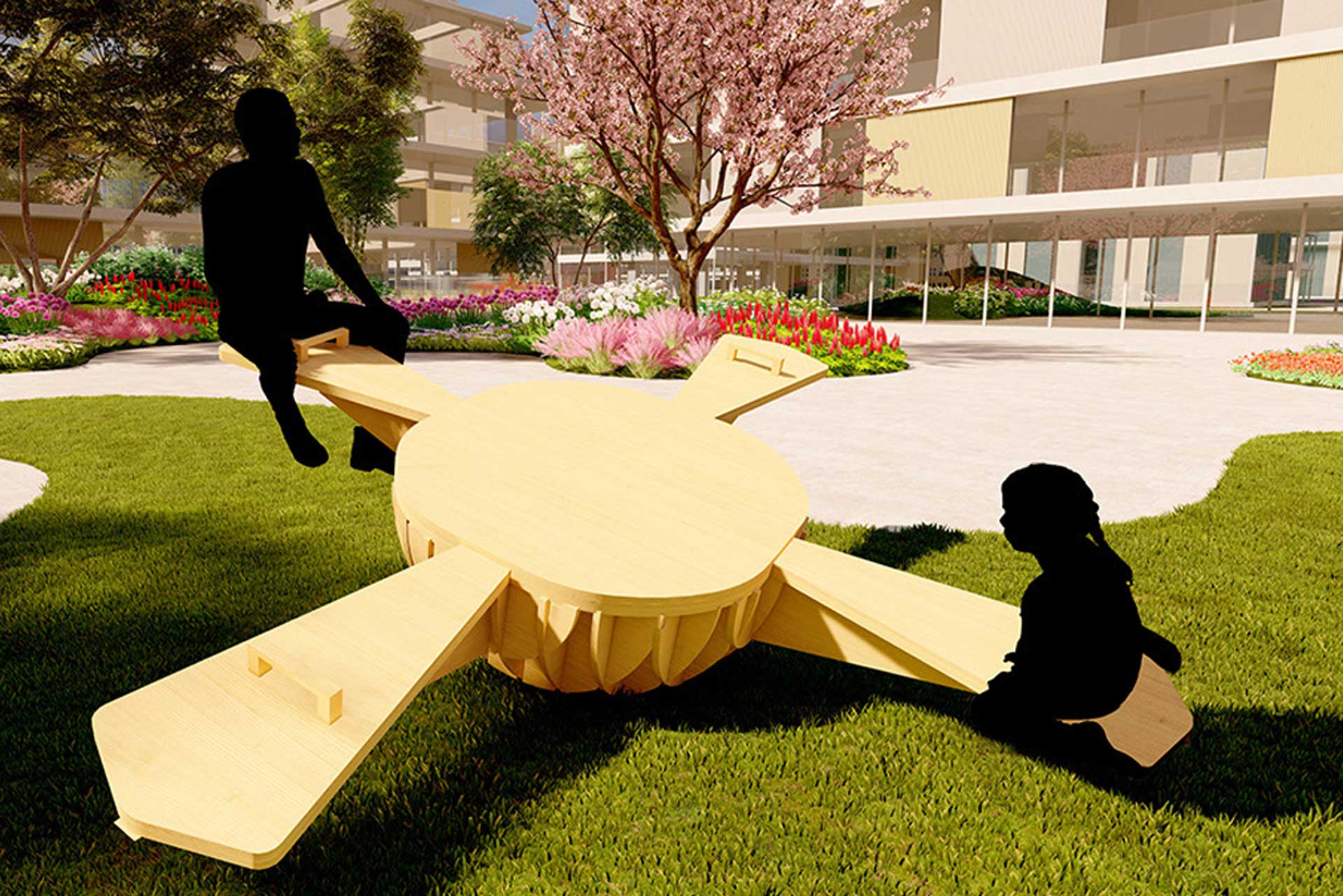Wooden Rotating Seesaw: A Creative Spin by Wentao Zhong

Transforming Tradition: Flow Chair by Yue Liang, Anqi Wang, Ruijing Sun, and Hao Zhou
February 3, 2025
Skincare Made Effortless with MUUS by Yi Ching Wang
February 4, 2025W Studio is a collective of designers with expertise spanning architecture, landscape design, urban design, and UI/UX design. By sharing ideas from various perspectives, we collaborate to develop and communicate innovative prototypes and concepts.
Our projects span multiple scales, ranging from architecture and landscape to furniture and toys.
I find great satisfaction in designing small-scale outdoor and indoor furniture. The process starts with creating low-cost prototypes, enabling us to quickly gather user feedback and make improvements. This iterative approach ensures the final design is not only visually appealing and affordable but also durable and environmentally friendly.
By prioritizing sustainability and user input from the beginning, we craft pieces that have enduring appeal and make a positive impact on both the environment and people's lives.
Designers must always think across different scales and seek feedback to refine their work. It's crucial to stay humble, continuously acquiring new skills and insights from others.
By embracing diverse perspectives and learning from them, designers can enhance their approach, ensuring that these varied experiences contribute to the creation of truly impactful designs.
Research, discussion, and prototyping are at the core of my design approach. I believe thorough research forms the foundation for effective and well-informed designs. Engaging in discussions with colleagues and clients is essential, as it provides diverse perspectives and helps refine ideas. Prototyping acts as a practical tool to test concepts and gather real-world feedback.
Instead of working in isolation, I value close collaboration with others, which not only enriches the design process but ensures the final result is innovative and meets the needs and expectations of all stakeholders. By integrating research, open communication, and iterative prototyping, I aim to create designs that are thoughtful, relevant, and successful.
Research, discussion, and prototyping are the cornerstones of my design process, with each contributing uniquely to the creation of effective and impactful solutions.
Research - is the first step, involving a deep dive into the problem at hand. This includes understanding the context, gathering data, analyzing trends, and exploring existing solutions.
Through comprehensive research, I aim to gain a thorough understanding of the user needs, market conditions, and any constraints or opportunities. This foundational knowledge ensures that the design is not only informed but also relevant and innovative.
Discussion - follows, where I actively engage with colleagues, clients, and stakeholders. These conversations are vital for brainstorming ideas, sharing insights, and gaining diverse perspectives.
Collaborative discussions help refine concepts and address potential challenges early in the process. By incorporating feedback and fostering an open exchange of ideas, I ensure that the design evolves in a way that is well-aligned with user needs and project goals.
Prototyping - is the practical application of research and discussion. Creating prototypes—whether low-fidelity sketches, digital mockups, or physical models—allows me to test and validate design concepts. This iterative process provides valuable feedback and helps identify areas for improvement.
Prototyping clarifies design ideas and helps communicate them effectively to stakeholders, enabling iterative refinement and ensuring the final design meets its intended objectives.
My design work is deeply shaped by my country, China, and its rich cultural heritage. The country's profound historical roots and diverse traditions serve as an endless source of inspiration, influencing every aspect of my creations. Traditional art forms, architectural styles, and cultural symbols seamlessly weave into my designs, infusing them with deeper meaning and connection.
China's vast history provides a treasure trove of design motifs, techniques, and philosophies that I blend into contemporary contexts. For example, the principles of Feng Shui—emphasizing the balance between human spaces and natural forces—guide both spatial arrangements and aesthetic decisions.
The artistry of traditional Chinese craftsmanship, from intricate woodwork to delicate ceramics, motivates me to incorporate distinctive textures and intricate details into my designs.
Winning this award marks a significant milestone for us. It not only affirms our innovative approach but also paves the way for new collaborations, greatly enhancing our credibility within the design community. I am truly excited to receive this honor.
It holds immense value for our team and inspires us to reflect more profoundly on the world and the challenges ahead. As always, design serves as a powerful tool for introspection, listening, creation, and improving communication—ultimately helping us shape a better world.
We are constantly exploring ways to unite people through play, and our new Wooden Rotating Seesaw is a perfect example of this vision. Crafted entirely from wood, this charming seesaw can accommodate up to four players and features a unique assembly mechanism that requires no screws, ensuring easy setup and disassembly.
It’s not just a play structure; it’s a catalyst for communal fun and connection. As it gently rotates, it creates an atmosphere where laughter and conversations flow, fostering meaningful connections that span generations and backgrounds.
This seesaw transforms playtime into a shared experience, bringing people together through the simple joy of play.
Ensuring the stability and ease of assembly of this structure using only wood was one of the most significant challenges we faced. Our team dedicated considerable effort to overcoming this obstacle by experimenting with various wood assembly techniques and creating multiple prototypes using CNC cutting. We rigorously tested each design to identify the most effective method for achieving both stability and ease of assembly.
Our process involved exploring different joint configurations and structural designs to pinpoint the optimal solution. Through thorough analyses and performance tests, we continuously refined our prototypes, making adjustments based on the results. Each iteration brought us closer to a design that seamlessly balances structural integrity with user-friendly assembly.
The final result is a seesaw that not only meets our aesthetic and functional goals but also ensures a smooth setup and dismantling process. By consistently iterating and refining our prototypes, we’ve developed a robust, efficient design that withstands the demands of active play while remaining easy to assemble and disassemble.
Winning this award has been a defining moment for our previous project, and we are dedicated to building on this experience to reach a wider audience and deepen our understanding of their needs.
Our goal is to think more expansively, using our designs to engage with diverse groups and address a range of challenges. We are excited and optimistic about the opportunities ahead, confident that our unique approach will create meaningful connections and deliver impactful solutions.
Communication is the foundation of effective collaboration and successful project outcomes. It ensures clarity, enabling ideas to be accurately conveyed among team members, clients, and stakeholders. In design, effective communication goes beyond simply sharing information; it involves actively listening, offering constructive feedback, and aligning all parties toward a common vision.
This dynamic exchange of ideas refines concepts and ensures the final design resonates with its intended audience.
An innovative atmosphere is essential in the design process, nurturing a culture of experimentation and curiosity. In such an environment, traditional methods are challenged, and boundaries are pushed, leading to the discovery of creative solutions.
This space encourages the exploration of new technologies and approaches, while also embracing creative risks. It empowers designers to think beyond conventional limits and tackle problems from fresh perspectives, resulting in breakthroughs that can set new industry standards.
Creative thinking is a driving force behind exceptional design. It involves approaching challenges with an open mind, generating original ideas, and blending diverse influences into unique solutions. Creative thinking extends beyond aesthetics; it encompasses problem-solving, user experience, and functionality.
It requires both intuition and analytical skills, enabling designers to create experiences that are visually compelling, meaningful, and effective. By embracing creative thinking, designers can transform ordinary concepts into extraordinary innovations that deeply resonate with their audience.
The Chinese design industry stands out for its unique blend of rich cultural heritage and rapid modernization. Traditional elements, such as calligraphy and ceramics, are seamlessly integrated with cutting-edge technologies and innovative practices. This dynamic combination reflects China’s swift urbanization and economic growth, creating a design landscape that embraces both historical influences and contemporary trends.
The industry benefits from strong government support, a growing middle class with evolving tastes, and a focus on nurturing emerging talent through advanced education. Additionally, global exchanges introduce international influences, enriching China’s design scene and positioning it as a hub of creativity and technological advancement.
AI-generated tools will be a key focus over the next 5 to 10 years. Rather than worrying about potential job loss, it’s more valuable to focus on strengthening human connections and enhancing quality of life.
We should aim to communicate effectively with both AI and people, using AI to streamline tasks and allow more focus on design, communication, and improving our everyday experiences.
Stay humble and view every challenge as an opportunity for growth. In design, it's crucial to prioritize the user's needs in every decision you make and keep sustainability at the forefront of your work.
As you advance in this field, strive for your designs to solve problems, inspire, and push the boundaries of what’s possible.
Oki Sato is celebrated for his minimalist yet playful approach to design, often blending simplicity with a touch of whimsy. His work spans various disciplines, including architecture, interior design, furniture, and product design.
I have learned a lot from his design philosophy and always strive to be creative, using various approaches to solve problems.
Never fear failure. In design, encountering new challenges is a natural part of the process. Each obstacle presents an opportunity to learn and grow. Embrace these challenges with curiosity and openness, exploring solutions from various perspectives.
By continuously learning and applying these insights, you can transform setbacks into stepping stones for innovative design. Persistence is key—keep trying, adapt, and refine your approach. Remember, perseverance and a willingness to experiment are crucial for achieving success and making meaningful contributions to the design field.
Winning Entry
Wentao Zhong
Wentao Zhong is a talented designer specializing in landscape, urban, and visual design at W Studio, a collective celebrated for its diverse expertise in architecture, landscape design, urban planning, and UI/UX innovation.
Explore the journey of Yue Liang, Anqi Wang, Ruijing Sun and Hao Zhou, the Silver Winners of the 2024 NY Product Design Awards. Anqi is an Architectural Job Captain in Santa Ana, Ruijing an architectural designer at OLI Architecture, Yue a Design Professional 1 at ODP Architects, and Hao part of a modular design firm specializing in "Design, Manufacture, Construction (DMC)." Together, they created the Flow Chair.



